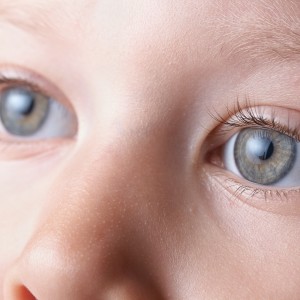 A study published in the American Journal of Ophthalmology focused on stereopsis outcomes in children who underwent surgery for unilateral congenital cataract and subsequent optical correction. The study is entitled “Stereopsis Results at 4.5 Years of Age in the Infant Aphakia Treatment Study.”
A study published in the American Journal of Ophthalmology focused on stereopsis outcomes in children who underwent surgery for unilateral congenital cataract and subsequent optical correction. The study is entitled “Stereopsis Results at 4.5 Years of Age in the Infant Aphakia Treatment Study.”
Stereopsis corresponds to the perception of 3-dimensionality (3D), the perception of depth in binocular vision. At birth, children with unilateral congenital cataract present with an eye lens opacity that, in some cases, does not progress, whereas in others it can lead to visual impairment. In cases severe enough to require surgery, stereopsis is usually impaired, meaning that children do not experience an equal and simultaneous visual input to both eyes. There are reports of good stereopsis after unilateral congenital cataract surgery, however, the treatment and exams performed are not standardized.
The Infant Aphakia Treatment Study is a clinical study conceived to determine the optimal treatment for aphakia (the absence or loss of the eye’s natural crystalline lens) in infants between the ages of 1 and 7 months that underwent surgery for a cataract in one of the eyes. The correction treatments considered are the use of a contact lens or the surgical placement of a plastic lens (intraocular lens – IOL) in the eye after surgery for cataract removal. In this study, differences in stereopsis between the two optical correction treatment groups were assessed in 113 children 4.5 years after cataract surgery.
Researchers found that 25% of the children responded positively to at least one of the stereopsis tests employed, and that the results were similar in infants from both treatment groups, suggesting that there is no difference between optical correction by either contact lens or IOL in stereopsis results. “We found that the visual outcomes were the same if an infant was treated with an IOL or a contact lens after unilateral cataract surgery, but the children treated with an IOL had more intraoperative and postoperative adverse events and require more additional intraocular surgeries to treat these adverse events,” said the study’s senior author Dr. Scott R. Lambert in a news release.
On the other hand, the median age at the time of surgery was found to be younger for patients with stereopsis in comparison with those without stereopsis (1.2 vs 2.4 months, respectively), and patients with stereopsis also had better median visual acuity than those without stereopsis (20/40 vs 20/252, respectively). These results suggest that surgery at an early age and a visual acuity equal or better than 20/40 in the treated eye play an important role in the stereopsis outcome. “The children with the best stereopsis [outcomes] had early cataract surgery at 4 to 5 weeks after birth and excellent visual acuity,” said Dr. Lambert. “High-grade stereopsis is the hardest visual outcome to achieve in these patients.” Only around 4% of the children had high-grade stereopsis in this study.
Dr. Lambert stated that he was “surprised how well some of the children ended up seeing at age 5. In fact, one child was able to see 20/12 in both eyes and had normal stereopsis, showing that it is possible for these children to have normal vision if treated appropriately.” Concerning the optical correction options, Dr. Lambert defends that it is better to treat aphakic infants with contact lenses in case the parents can afford them. “Otherwise, I would still recommend implanting an IOL, even though significantly more secondary surgeries were performed in patients who received an IOL.”
“We hope to obtain funding so we can examine these children one additional time, when they are 10 years old,” concluded Dr. Lambert.


